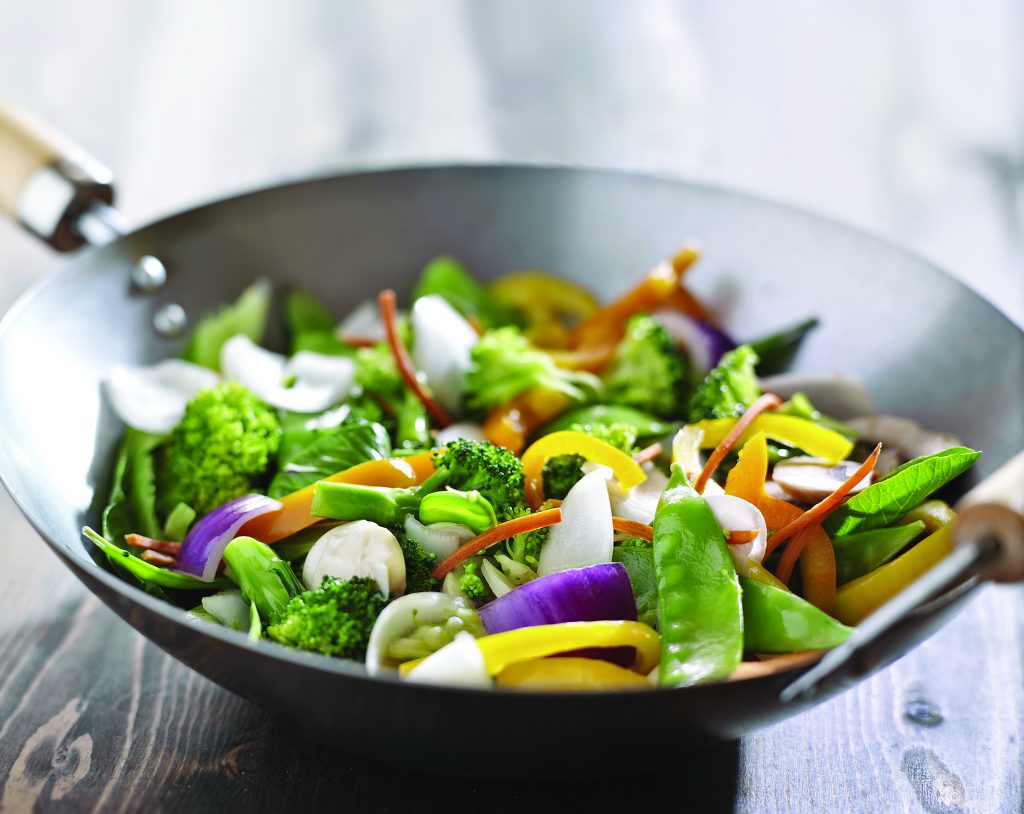
Makes 2 servings | Serving size: 1 Cup
Ingredients
Choose 5 vegetables (½ cup of each)
- Onion
- Broccoli
- Celery
- Carrots
- Peppers
- Mushrooms
- Squash
- Zucchini
- Cauliflower
Choose 1 starch (1 cup per person, cooked according to package directions)
- Brown rice
- White rice
- Rice Noodles
- Whole-wheat spaghetti noodles
Other Ingredients
- ¼ cup stir-fry sauce (see recipe below)
- 1-2 tablespoons vegetable oil
Directions
- Wash and chop selected vegetables into small evenly sized pieces. You may cut them into circles, strips, or cubes as desired. A variety of shapes will make the stir-fry more pleasing to the eye.
- Make Stir-Fry Sauce (see recipe below).
- Heat a small amount (1 tablespoon or less) of vegetable oil over high heat in a 10-inch frying pan, electric skillet, or wok.
- Keeping the heat high, add vegetables to the pan in order of firmness–harder foods first and ending with the softest foods.
- Toss vegetables during cooking to keep them from sticking. When stir-frying, cooked vegetables should still be crisp and retain their bright color.
- Add sauce to taste (about ¼ cup). Stir-fry until all vegetables are thoroughly coated.
- Serve with the starch of choice.
Stir-Fry Sauce
Makes ½ cup
Ingredients
- 2 tablespoons sodium-free beef bouillon
- 2 teaspoons apple cider vinegar
- 1 teaspoon dark molasses
- ⅛ teaspoon ground ginger
- Dash of black pepper
- ⅛ teaspoon garlic powder
- 1 cup water
- 2 tablespoons cornstarch
Directions
- Combine all ingredients in a saucepan and boil gently, uncovered for 5 or more minutes or until sauce is reduced to ½ cup.
- When cooked, pour into a lidded jar and keep in the refrigerator.
- Stir before using.
Written by: Janet Bryan